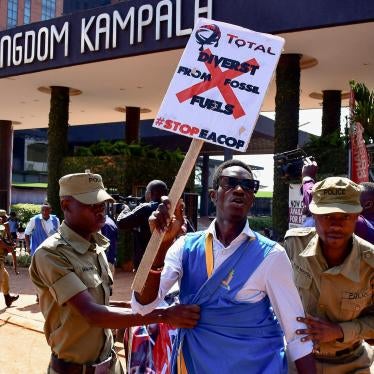Kenya joined the rest of the world to celebrate freedom of the press this week under a hostile and uncertain environment for the media. Despite numerous public promises by President Uhuru Kenyatta to safeguard press freedom, the situation has continued to deteriorate as police and senior state officials increasingly get away with physical attacks or open threats to journalists writing on sensitive issues.
The period around August 2017’s disputed presidential elections was particularly challenging for the media. But while political tensions have eased, the ability of journalists to report and comment freely continue to be undermined by state officials.
On March 26, 2018, Kenyan media reported that anti-riot police physically attacked journalists, including Citizen TV’s Stephen Letoo and NTV cameraman, Robert Gichira, as they reported on the airport scuffle that ensued during deportation of opposition lawyer, Miguna Miguna.
On January 30, the government switched off three television stations that defied a state directive not to accord live coverage to Raila Odinga’s mock swearing in.
On January 6, an audio recording surfaced, apparently of a senior government official, threatening Daily Nation journalist, Justus Wanga, over a story, including a threat to have Wanga fired. Earlier, on November 18, 2017, an audio recording surfaced apparently of another senior state official threatening KTN journalist, Mark Nabiswa, over his live coverage of opposition leader, Raila Odinga.
On August 12, according to Standard newspaper, police arrested Kenya Television Network (KTN) journalist Duncan Khaemba while reporting on violent post-election protests in Nairobi’s Kibera slum for allegedly possessing a helmet and body armor without a proper license. The same month, police snatched the phone of Simon Achola, a reporter with government-owned Kenya Broadcasting Corporation (KBC) and deleted his photographs of the August protests. Also in August, police harassed reporters from the privately-owned Citizen Television at the Miruka Hotel, Kisumu, and injured at least two international journalists, according to the Committee to Protect Journalists.
These cases appear to suggest that patterns of abuse of journalists that Human Rights Watch and Article 19 documented countrywide in a joint May 2017 report have continued. We found that Kenyan police rarely investigated cases of threats, intimidation, and physical attacks against journalists.
Kenyan authorities should ensure full respect for international law by allowing open reporting and commentary on any issues of pressing public interest. Unless they do, Kenyan media and journalists have more to worry about than to celebrate during this year’s World Press Freedom Day.









